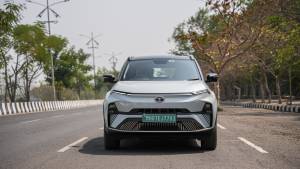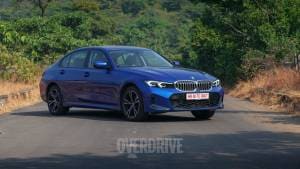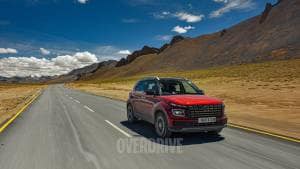Summer special: Staying cool on a motorcycle
If you've been reading our extensive feature on air conditioning in cars but are a hard-core motorcyclist, don't feel envious. No matter how many gadgets they cram into cars, a motorcycle will always lean into corners and that's unbeatable. Yes, even on a really hot day. When the temperatures get really high though, you need to bring a few extra tools to the table so you feel warm about your motorcycle without feeling hot. Here is how to keep your cool on a hot day.
Change when you ride
The most obvious way to avoid the heat is to avoid it. Consider changing the time of the day you ride to see if you can avoid the worst of it. This might mean heading to work an hour earlier than usual. Or, on the weekend, starting out at 0500 instead of 0700, so you're back at 1200 instead of 1400.
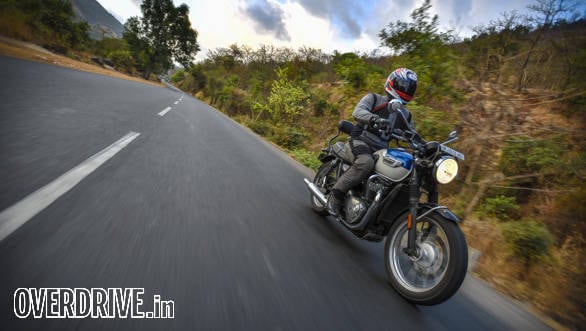 When it gets really hot, you move your riding to a cooler part of the day. Which would be a longer stint early in the morning followed by a break during the hottest part of the day
When it gets really hot, you move your riding to a cooler part of the day. Which would be a longer stint early in the morning followed by a break during the hottest part of the day
Usually, the worst part of the day to ride is between 1400 and 1600. This when the day usually records the peak temperatures. These are the two hours you want to avoid. Among the most underrated ways to do this, don't laugh, is a late lunch on the road. And let it last for as long as you think it's way too hot to ride.
Drink up!
One of the most effective ways heat kills the will to ride is by dehydrating you. Your body is a finely tuned system that relies on thermal stability to function. In the heat, you're constantly losing fluids and salts via sweating. These need to be replenished. Just drinking water regularly will dramatically alter how hot you're feeling.
All of us at OVERDRIVE who ride through the year eventually find ourselves reaching for our hydration bags when it becomes time to ride in the heat. Which in and around Mumbai is pretty much the whole year. I use the expensive Kriega Hydro 3 but the boys use other, less-expensive bags. The process is to use a bite-valve to drink water as you ride in all cases. The result is hours of extra saddle time without exception or exhaustion. If you don't want to invest in a bag, carry water in an insulated container and stop regularly to have a sip or two.
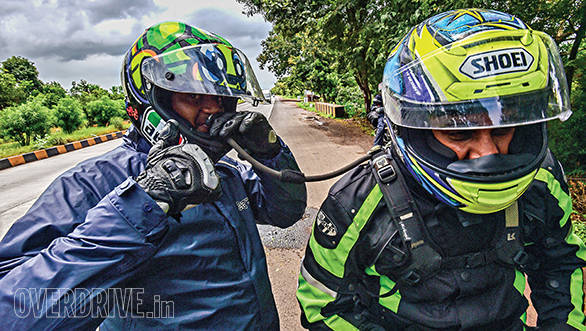 Drinking water often and in small quantities is of the essence. Here Halley - who's finished his supply - 'borrows' some water from my hydration pack at a quick stop
Drinking water often and in small quantities is of the essence. Here Halley - who's finished his supply - 'borrows' some water from my hydration pack at a quick stop
The trick to remember is to drink small amounts often rather than big amounts sporadically. Consuming a litre of cold water might feel great, but the fluid is too much for the body to absorb and, most likely, will pass right through. You'll feel good for a short while and then like you need a piddle for a long time. The small-sips-often method is easiest with a hydration pack.
If the day is really muggy, consider adding an ORS solution - like Electral or equivalent - to the water so you replace the salts as well as the liquids lost.
It bears saying here that the drink that helps the most is water. Plain and simple, cool to cold water. Energy drinks, coffee, soft drinks etc. are all less effective than water. Tea actually can work but water, ultimately, is the solution. In fact, the saying goes that if you feel like you need something and can't put your finger on it, it's usually water that your body wants.
Appropriate gear
Could you be feeling hot because you're not dressed right? When was the last time you wore a sweater to the brunch in June in India? Selecting riding gear is the same thing - you need to dress correctly for the occasion.
Rule one, without exception, is to dress for the fall. Not autumn, the fall, the crash, the accident.
After the safety - armour, abrasion resistant materials is taken care of, comes the need for comfort. You will usually find that voluminous, loose clothing doesn't work on the motorcycle. Even in hot weather, you're looking for a fitted garment. But the hotter the weather, the more you're looking for mesh. The progression is windproof/waterproof barrier (cold and extreme cold), breathable (cold to mild), vented (cold to moderately warm) and finally mesh (cool to extremely hot).
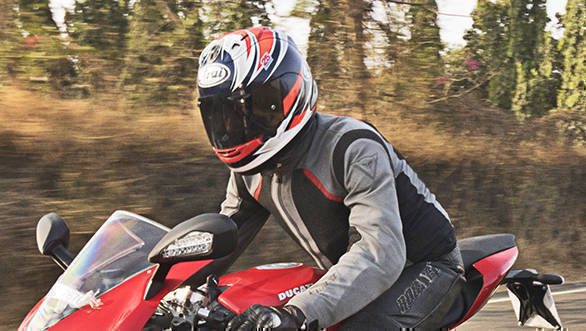 See the dark grey parts on the chest and over the shoulder on this jacket? Those parts are made of mesh which means air can pass through and cool the rider easily. Mesh is the ultimate solution for riding in heat like ours. Similarly, a well-vented helmet, like the Arai RX-7V in the photograph, changes how hot you feel
See the dark grey parts on the chest and over the shoulder on this jacket? Those parts are made of mesh which means air can pass through and cool the rider easily. Mesh is the ultimate solution for riding in heat like ours. Similarly, a well-vented helmet, like the Arai RX-7V in the photograph, changes how hot you feel
In Mumbai, where the temperature ranges from high to high and humidity is also high, mesh is almost the only gear that works in this condition - like the Dainese AirTourer S-ST in the photograph above. We add waterproof layers for the monsoon and keep them on occasionally in the winter when the land just outside the city gets surprisingly cool.
In Delhi, where the heat of the summer and the cold of the winter are both serious, you need true four-season gear. The Dainese D-Explorer Gore Tex Jacket (and pants) is a good solution, but it's very, very expensive. A mesh jacket can be made to work in the cold with the addition of layers. But your best bet might be two jackets while a pair of vented pants (like the Joe Rocket Alter Ego) might manage all the seasons.
Common sense cooling: base layers
Next come other ways to cool yourself. The most effective of these is evaporative cooling. And no, that doesn't mean you're riding in wet clothes the whole time. Yuck, why would you think that?
The starting point of evaporative cooling is to eliminate cotton from the riding life. Cotton gets wet and dries slowly. This blocks its ability to cool and make you feel sticky and horrible. What you're looking for are skintight base layers - the sports brands usually sell these under brands like Dri-fit or something similar. You do get motorcycle-specific cold- and warm-weather base layers, but I've tried them as well as normal sports versions. The difference is there, but not worth breaking the bank over.
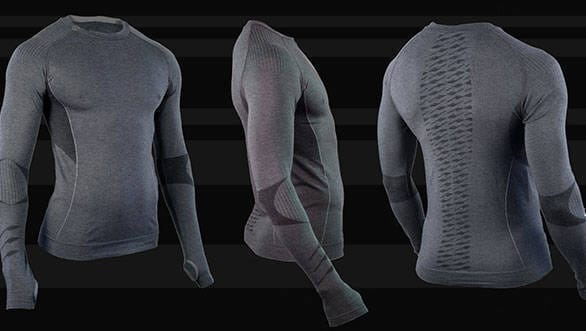 Fabulous secret powers were revealed to me the day I held aloft my magic synthetics and said, "By the power of base layers, I have the power!" It's not all hyperbole either. Base layers dry your sweat fast which promotes cooling and makes you feel dry at the end of the ride. They're odd in how they feel cool in the heat and warm in the cold - bonus! They're not cheap to buy, but I cannot recommend them enough
Fabulous secret powers were revealed to me the day I held aloft my magic synthetics and said, "By the power of base layers, I have the power!" It's not all hyperbole either. Base layers dry your sweat fast which promotes cooling and makes you feel dry at the end of the ride. They're odd in how they feel cool in the heat and warm in the cold - bonus! They're not cheap to buy, but I cannot recommend them enough
I could write pages and pages about how much difference this one thing alone will make. I am almost never without base layer tops and leggings when I am on a motorcycle today. And it makes riding in the heat, in the rain and in the cold a dramatically better experience.
An additional layer on top of this is the HyperKewl vest which we reviewed earlier. This is a vest that contains a chemical that absorbs water and cools you as the water evaporates slowly out. I found this very effective under vented jackets though it dries a little too quickly under mesh jackets in the Indian heat.
Common sense cooling: The back of the neck
The final layer is to cool the back of the neck. That's where blood rushing to the brain is close to the surface and cooling that flow can have outsized results in heat management. That's why you'll see the MotoGP racers with little fans sat on the aero-humps of their leathers at the hotter races.
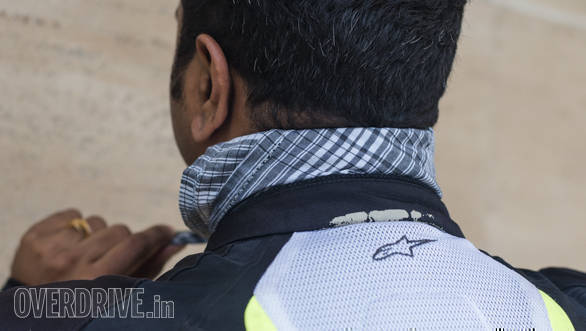 If you don't have a buff, use a handkerchief. Tie the knot in front so that the triangular flap goes over your neck. Wet this and keep this as wet as possible. The difference cooling the back of the neck (and your wrists) is disproportionate
If you don't have a buff, use a handkerchief. Tie the knot in front so that the triangular flap goes over your neck. Wet this and keep this as wet as possible. The difference cooling the back of the neck (and your wrists) is disproportionate
The convenient way to do this is to wear a wet buff around the neck. Just wring some of the water out to restrict the dripping to a low level - some drip into the base layer feels good in the heat. And whenever you stop, re-wet the buff. Don't have a buff? Get a handkerchief and tie it so that the triangular flap covers your neck. Ensure it's thoroughly wet.
Know when to stop
Yes, there are days when it is just too hot to ride. Or times when you've reached the limit of how much heat you can handle. A condition when the body begins to overheat is called heat exhaustion. If it gets worse, it is called heat stroke, which can be fatal. Recognising the signs of both can allow you to deal with them effectively.
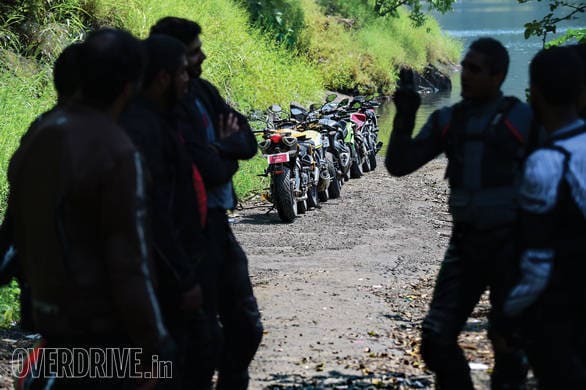 During the hottest part of the day, if the heat becomes too much, just stop riding - it is the smartest thing to do. Just taking a long lunch break from, say 2pm to 4pm, gets you through the hottest part of the riding day. It can make a huge difference
During the hottest part of the day, if the heat becomes too much, just stop riding - it is the smartest thing to do. Just taking a long lunch break from, say 2pm to 4pm, gets you through the hottest part of the riding day. It can make a huge difference
Heat exhaustion is usually accompanied by its two nasty friends - dehydration and salt depletion. The symptoms include dark urine (dehydration), rapid heartbeat, pale skin, confusion, dizziness, fainting, a headache and cramps. The solution is to drink water. Remember to sip steadily, not gulp and stop. A cold shower, if possible, will help cool off as will a cold tower, shade and fans. You should see symptoms ease within 15 minutes or so. If they don't, you might need more help.
Heat stroke is officially considered a medical emergency in most countries. It can kill and cause brain damage, so it shouldn't be taken lightly. The signature symptom is temperature above 104°F but that's hard to measure by the side of the road. The more obvious symptoms include a throbbing headache, rapid heartbeat, rapid but shallow breathing, a lack of sweat (there's no water left!), red, hot and dry skin, nausea and confusion. In some cases, a loss of consciousness and seizures may also happen. If you suspect heat stroke, you're in need of medical help and quickly. First aid measures include cooling the body as much as you can - that's fans, shade and ice. Armpits, groin, neck and back are the areas to target.
Final words
Riding in extreme heat is possible and can be more enjoyable than you think. Just like riding in the cold, it requires a little bit of common sense and a little bit of preparation. And most of that is about allowing your body to sweat and cool and having water on hand to refill the stores as it were. Enjoy your ride, don't let the lack of the roof and air conditioning get you.
Also see:
